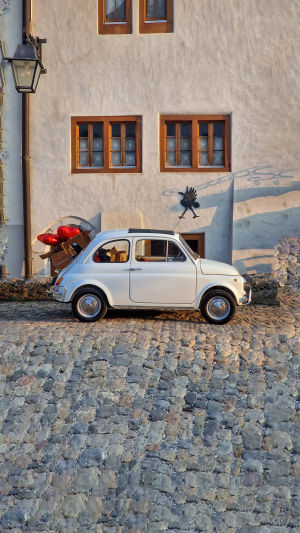Vintage and modern cars represent two distinct eras of automobile design and technology, each with its unique characteristics and appeal.
One prominent difference lies in their design aesthetics.
Vintage cars, often seen as classic or antique, evoke a sense of nostalgia and charm.
They showcase elegant lines, graceful curves, and intricate detailing, reflecting the design trends of the time.
Modern cars emphasize sleekness, aerodynamics, and futuristic elements.
They feature sharp angles, smooth surfaces, and minimalist styling, which align with contemporary tastes.
Performance is another differentiating factor.
Vintage cars often feature larger and more powerful engines, but they may lack the advanced technology and engineering refinements found in modern vehicles.
Vintage cars can offer a thrilling, raw driving experience, with manual transmissions and upgradable mechanical components.
In contrast, modern cars are equipped with advanced safety features, fuel efficiency, and cutting-edge technology, making them more comfortable, reliable, and user-friendly for daily driving.
The availability and advancements in features are also contrasting between vintage and modern cars.
Vintage cars typically have minimalistic interiors with necessities, such as analog gauges, simple sound systems, and rudimentary climate control.
In contrast, modern cars offer a plethora of features, including touchscreen infotainment systems, navigation, Bluetooth connectivity, voice control, advanced driver-assistance systems, and creature comforts like heated seats and automatic climate control.
Maintenance and upkeep further distinguish vintage and modern cars.
Vintage cars require specialized maintenance, as sourcing parts and finding mechanics with expertise in older models can be challenging.
Additionally, due to their age, vintage cars are more prone to mechanical issues and may require more frequent maintenance.
In contrast, modern cars benefit from the availability of parts, the convenience of authorized service centers, and the reliability of new technologies, which simplify the maintenance process.
Cultural significance is an important aspect to consider when comparing vintage and modern cars. Vintage cars represent an era of craftsmanship, historical importance, and cultural heritage.
They evoke a sense of nostalgia, acting as time capsules that showcase the automotive industry's evolution.
Vintage car events and collectors' communities celebrate the beauty and heritage of these vehicles.
Conversely, modern cars reflect contemporary demands, technological progress, and shifting societal values.
They embody the latest advancements in design, engineering, and sustainability, aligning with current environmental concerns and showcasing the direction of the automotive industry.
Vintage cars exude a classic charm and require specialized attention, while modern cars prioritize advanced technology, reliability, and efficiency.





